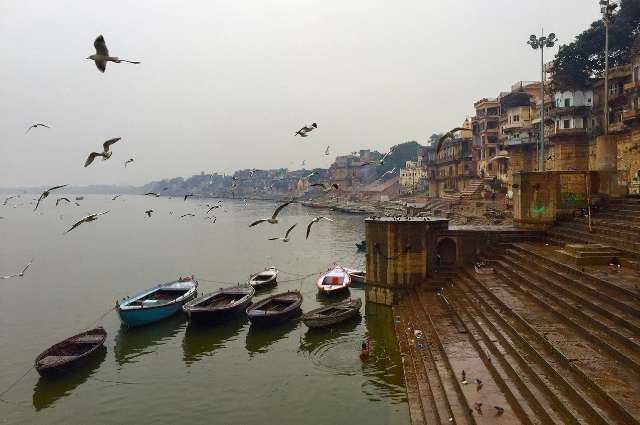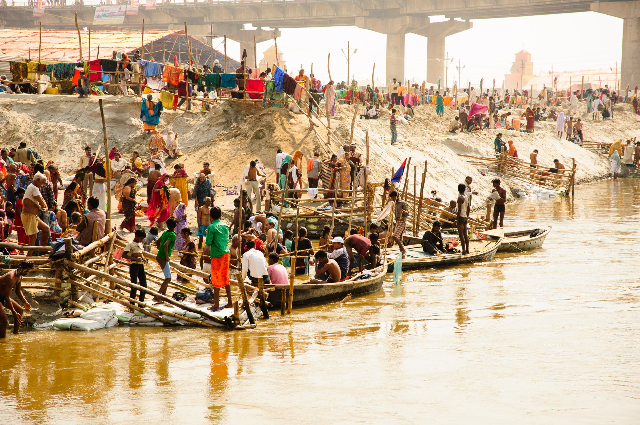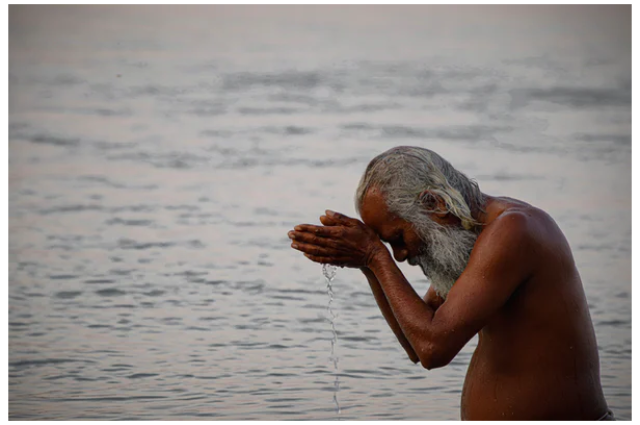
Image by Kraig Seder from Pixabay
The River Ganga is a very significant river in India, not only for religious and spiritual purposes, but also for the livelihood and well-being of about 40% of the population of India. The river is under constant pressure of pollution and the situation gets dire with every passing day. The Prime Minister of India, Narendra Modi, noted that “If we are able to clean it, it will be a huge help for the 40 per cent population of the country. So, cleaning the Ganges is also an economic agenda.” With this in mind, the Namami Gange Programme, approved in June 2014 by the Government as a Flagship Programme was launched as an Integrated Conservation Mission. The budget outlined for this purpose was Rs.20,000 Crore and it aimed to accomplish conservation, rejuvenation and reduction in pollution in the river Ganga.
The main pillars of this programme involved activities such as sewage treatment, cleaning, conservation and development, among others. These activities were divided into Entry-level (which would be completed and have immediate impact), Medium-term (5-year implementation) and Long-term (10-year implementation) activities.
With the largest budget allocated yet for this purpose, a lot was accomplished under this programme. The National Mission for Clean Ganga (NMCG) divided its mission in four parts – Nirmal Ganga, Aviral Ganga, Jan Ganga and Gyan Ganga, focusing on cleaning pollution, ensuring flow, public participation and research respectively. Twelve new sewerage management projects were implemented in different states with the aim to increase sewerage capacity to 1187.33 (MLD). River front development projects and renovation work were carried out. Collection and disposal of the waste was done from the river surface and ghats. Under bio-diversity conservation, several projects such as Ganges River Dolphin Conservation Education Programme and Fish and Fishery Conservation in Ganga River were carried out. Afforestation was also an important activity under this programme. Industrial effluent monitoring was done through regulation enforcement and monitoring. Activities such as events, rallies, exhibitions, workshops and seminars were conducted to create public awareness. Ganga gram, a pillar of the programme, involved several Gram Panchayats in the process for better drinking water and sanitation.

The cleaning of Ganga had first been brought into the spotlight with the Ganga Action Plan in 1986. There were several issues with its implementation that were improved upon in the Namami Gange programme. Steps were taken before implementing the policy to identify the weak spots in the previous activities. The focus was shifted from a few cities to the entire main stem of the river. Newer and better technology was used in this programme as compared to before. The policy also was greatly helped by the involvement of seven Indian Institutes of Technology; basin management plans and field work proved to be useful to implement the programme in a time bound and efficient basis.
The decisions regarding funding also were appropriate and provided advantages for the implementation. It was decided that the government would offer 40% of the expenditure upfront and 60% in annuity. The water resources ministry also signed MOUS with 10 ministries to improve the implementation. One city-one operator was also implemented, which meant that each city would have an operator who would be responsible for the proceedings in that city. This helped in better governance and allowed for accountability.
According to available data, the NMCG has sanctioned 333 projects at Rs 29,578 crore, out of which 142 projects have been completed so far. Sewage treatment plants have been one of the major implementations which have helped to protect the river. During 2016-10, an area of 30,761 hectares has been planted under this programme. Dolphins have returned to the river in large numbers due to the conservation efforts. There are many successful activities under this programme, yet as with all policies and programmes that require efforts over the long term, concerns have been raised about the maintenance of the treatment plants and other apparatus, and the funding for the same.
A survey of all 1,109 grossly polluting industries (GPIs) was done to manage levels of industrial pollutants leading to the closing down of 333 GPIs. Real Time Effluent Monitoring Stations (EMS) were also installed to detect harmful effluents. One of the challenges that comes up here is that these monitoring systems need to be technologically advanced to give the best results.

Under Gram Ganga, Open Defecation-Free (ODF) India was carried out in rapid steps. Provision of toilets and sanitization of the areas prevented from human waste polluting the river. The programme failed to take in the maintenance problems in this case, especially in the long run. Problems cropped up regarding transport and storage of sewage and it also affected the water table in these areas.
The revenue spent on advertisements has also increased in recent times. This is considered to help in raising awareness about the issues and gather support for the programme by behavioral change. This has been criticized as unnecessary use of the funds. There are also questions raised about whether this policy was more for political reasons than for the river and the people.
The deadline set by the center to complete all the works detailed under this programme was 2022. But there are several challenges such as implementation level bottlenecks and procedural delays that need to be addressed before that goal can be reached. According to an audit by Comptroller and Auditor General (CAG), unused funds, absence of long-term plan and lack of pollution abatement works were the main issues with this policy. Environmental policies are India usually take second place, with economic and social issues taking major attention. Despite this, the Namami Gange programme offered a chance to improve and conserve the environment along with helping the population that is dependent on it. It is also directly linked to economic growth of the country.
The society and political systems play both, a very important role, and hold a significant share in the proceedings of the programmes. The people must take interest and follow the guidelines set to do their bit in cleaning the river. The consequences also directly affect the people themselves. As mentioned previously, 40% of people of the country rely on the river. Such a pressing matter is therefore for the benefit of the majority, and does not discriminate in any way. It also helps in sustainability and conservation of the environment, which is directly beneficial to the economic and social well-being of the country.
Setting deadlines is the way to go from a political perspective, since the people want the results they were promised. From a scientific perspective though, short deadlines, such as the ones proposed in this programme, are not feasible since these take efforts over the long-term. Hence, it must be ensured that these activities continue and are extended to other rivers as well, so that India’s water bodies are healthy and prosperous. Overall, this programme has been successful to an extent and will continue to be so, as long as the challenges are handled in and effective way.

